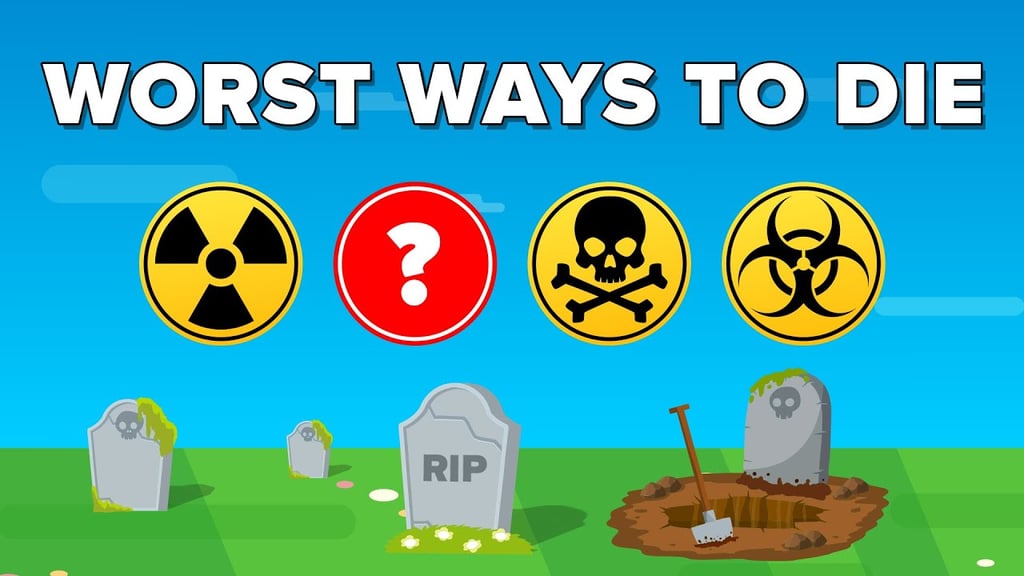Worst Way to Die: Australian Edition
Let's dive into what could be considered some of the worst ways to die in Australia.
9/14/20244 min read


Worst Ways to Die: Australian Edition
As someone who works in hospice care, my job is to make sure that people pass away as peacefully as possible. Yet, one question always comes up: "What is the worst way to die?" While this might seem like a query better suited for emergency personnel, I've had plenty of dinner conversations with nurses, paramedics, police officers, funeral directors, and even mortuary staff to tackle this question. So, based on their experiences and mine, let's dive into what could be considered some of the worst ways to die in Australia.
What Defines the "Worst" Way to Die?
Before we get into specifics, let’s first explore what "the worst way to die" actually means. Most of us instinctively think of pain when we hear that question, but could there be more to it? In hospice work, we often talk about what constitutes a "good death"—one that’s as pain-free as possible, not dragged out, and ideally surrounded by loved ones. On the flip side, a "bad death" could be painful, prolonged, and lonely. But does the worst death necessarily need to tick all these boxes?
One story that comes to mind is the death of Hisashi Ouchi, who endured a slow, agonizing death from radiation burns. And let’s not forget the infamous Byford Dolphin incident, where four deep-sea divers were tragically killed in a horrific decompression accident. While both incidents were nightmarish, they were also incredibly rare.
Dying Alone
At first glance, dying alone may not sound like the worst way to go. However, this was a common answer from paramedics, psychologists, and doctors who have seen what happens when someone dies without anyone around.
Imagine going about your regular day at home and suddenly suffering a stroke. You're on the floor, unable to move or reach the phone. In today's society, many people don’t know their neighbors well, and families aren’t always as close-knit as they used to be. You could be there for days, even weeks, with the physical pain of dehydration and starvation setting in, compounded by the psychological torment of wondering, "Will someone find me in time?"
Dying alone doesn’t just apply to medical emergencies. Falling off a ladder, slipping into a mineshaft, or getting lost in the vast Australian outback are all real possibilities. So, while dying alone might not seem as horrific on the surface, it checks all the boxes: prolonged, painful, and isolated.
Crocodile Attack
Australia is known for its dangerous wildlife, but while most of our deadly animals are easy to avoid, saltwater crocodiles, or "salties," are the exception. These prehistoric predators can grow up to 7 meters long and weigh over 1,000 kg. They mostly inhabit northern Australia, and while they don’t stroll through towns, some people—often tourists—still manage to get too close.
A saltwater crocodile attack begins with the croc grabbing hold of a limb. You might be near the water’s edge or hanging off a boat, ignoring all the local warnings. Once the croc has you in its jaws, it drags you into the water and starts a death roll, spinning rapidly to rip off your limb. You might drown, bleed out, or be crushed under the croc’s immense weight, but none of these outcomes are quick. Crocs aren’t merciful hunters—they don't finish you with a clean bite to the head. Instead, you face a slow, terrifying death in murky water.
Extreme Burns
Burns are universally acknowledged as some of the most painful injuries you can sustain, but full-thickness burns, which go through every layer of skin, take that to another level. If you suffer burns over a large part of your body, the immediate shock might protect you from the worst of the pain, but the real nightmare begins in the days and weeks that follow.
In my experience, burn victims often endure unimaginable pain for months on end. Even the slightest movement or breeze can feel like torture. Patients in burn units typically require heavy sedation, but the treatment itself—skin grafts, cleaning the wounds, and constant monitoring—adds layers of agony. Eventually, many patients die after enduring weeks or months of suffering. This prolonged, excruciating death was cited by nearly every professional I spoke to as one of the worst ways to go.
What About Drowning, Electrocution, and Other Scenarios?
You might be wondering why certain things—like drowning, electrocution, or being buried alive—didn’t make the list. I specifically asked my colleagues to focus on common, real-life experiences they’ve encountered in Australia. While drowning and electrocution are undoubtedly painful and terrifying, they tend to result in relatively quick deaths compared to the prolonged agony of burn injuries or the psychological torment of dying alone.
Watch our full video to explore this conversation further
Conclusion: The Real Fears
Knowing the worst ways to die that are more likely to happen can be even scarier than thinking about rare, extreme scenarios. But there are ways to mitigate the risk of these types of deaths. Having an advance care directive can be helpful in the event of severe burns, and taking steps to stay connected with others can reduce the likelihood of dying alone. And as for crocodile attacks? Just follow the signs and avoid trying to get a selfie with a "salty".
Book an online consultation below. Remember, it's never too early to talk about death.



